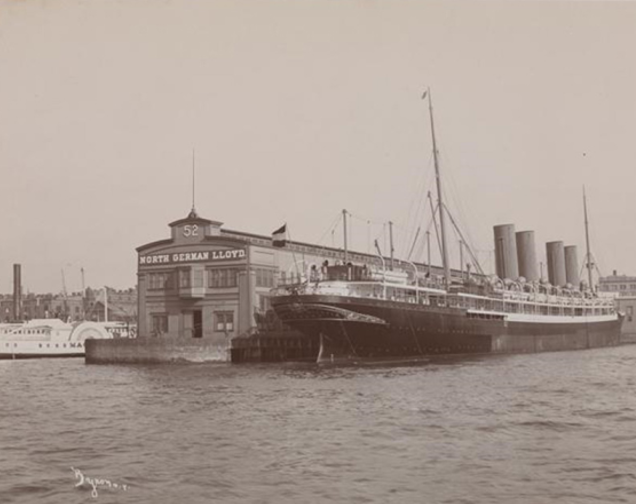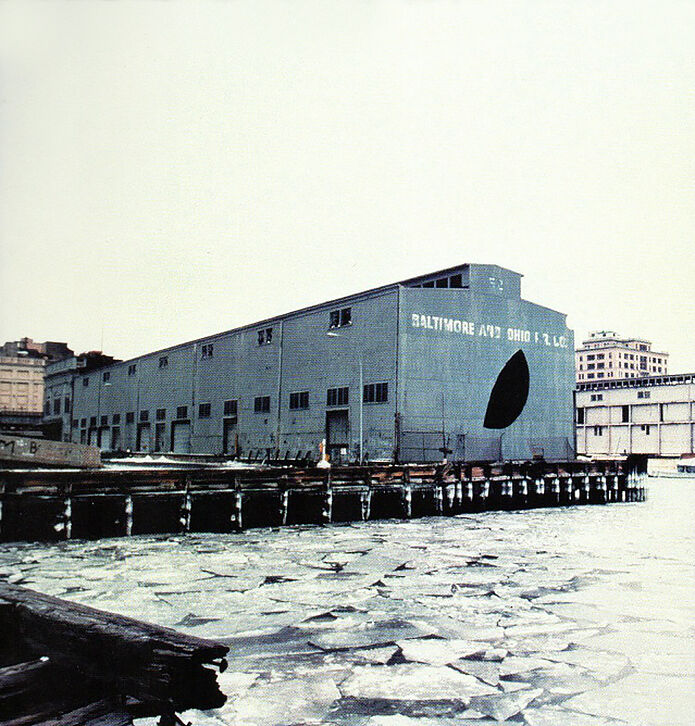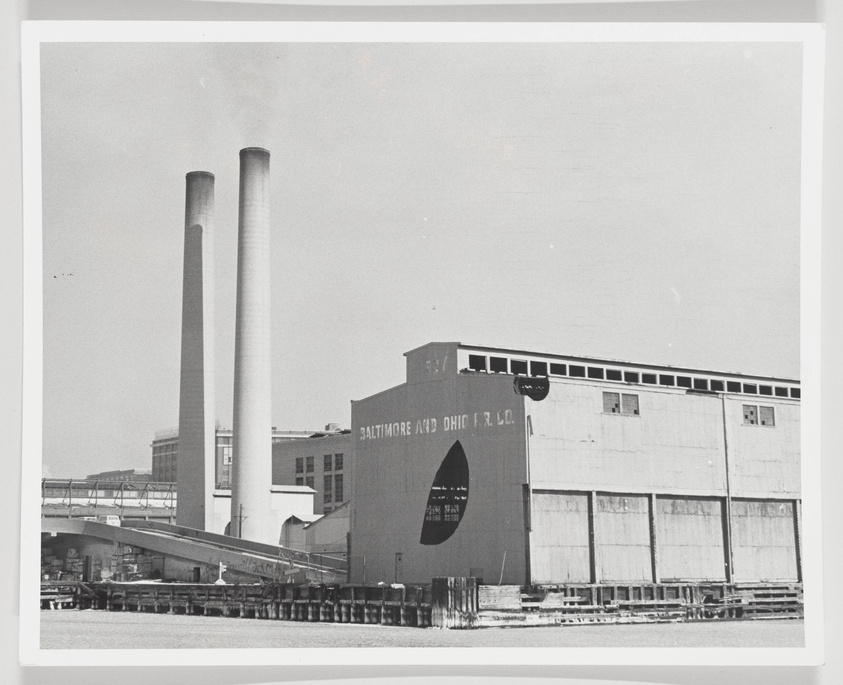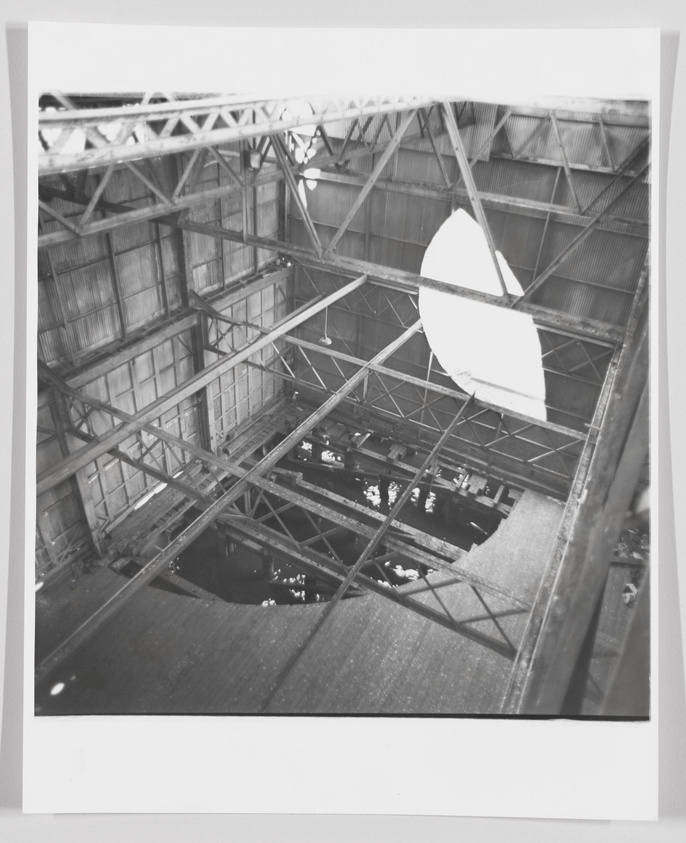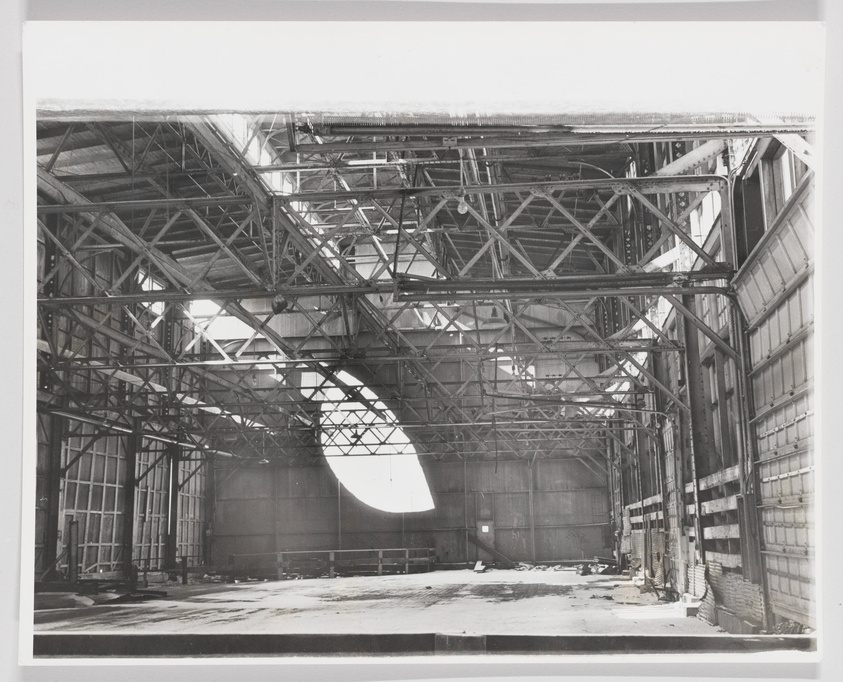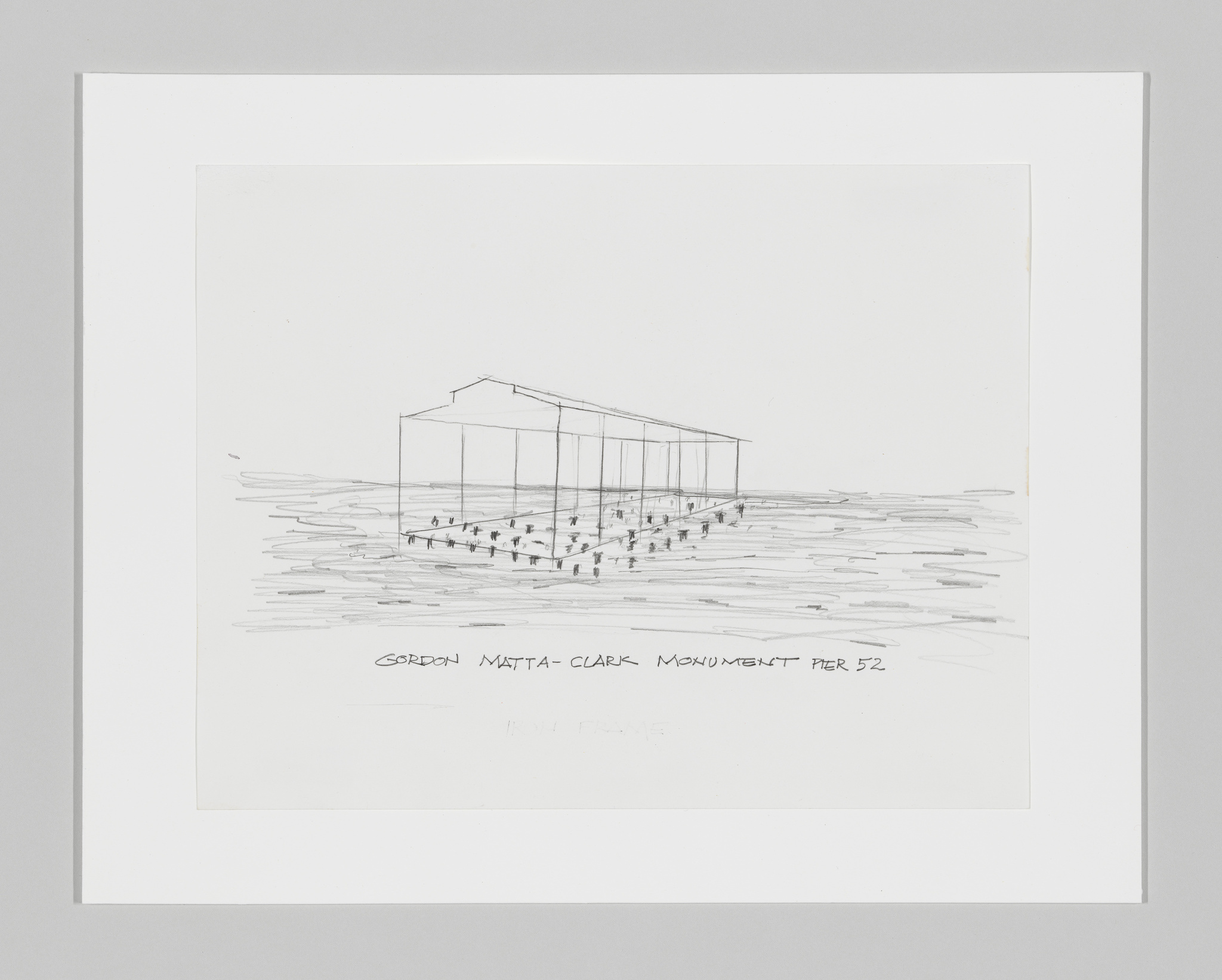David Hammons: Day’s End | Art & Artists
David Hammons: Day’s End | Art & Artists
Origins of Day’s End
1
In 1975, artist Gordon Matta-Clark (1943–78) envisioned a “cathedral of light” in a dilapidated pier shed on the Hudson River. A relic of New York’s historic shipping industry, Pier 52 was part of Manhattan’s deteriorating west side waterfront, which was contemporaneously revived by a thriving local Queer community. Matta-Clark likewise viewed the urban decay as an opportunity. Wielding a blowtorch and a chain saw, he carved into the walls and floors of the abandoned structure. Titled Day’s End (1975), his intervention was illicitly produced and ultimately short-lived, but its impact endured.
Nearly forty years later in the spring of 2014, artist David Hammons (b. 1943) toured the Whitney’s new downtown location, which overlooks the site where Day’s End once stood. Matta-Clark’s intervention, and the pier shed, was demolished in 1975, but memory of it captivated Hammons. In the weeks before the Museum opened its inaugural exhibition in the Meatpacking District, Hammons sketched a metal armature hovering over a body of water and mailed it to the Whitney’s director, Adam D. Weinberg. There was no further explanation other than the brief accompanying text, “Gordon Matta-Clark Monument Pier 52.” It was the beginning of a new Day’s End (2014–21), a ghostly representation of Matta-Clark’s demolished structure, and the start of a plan to revive Gansevoort Peninsula.

